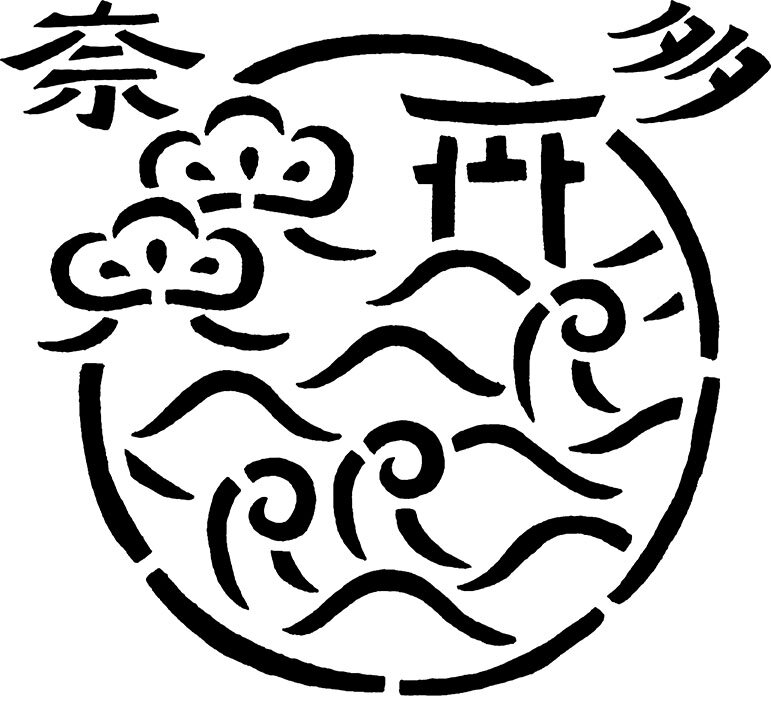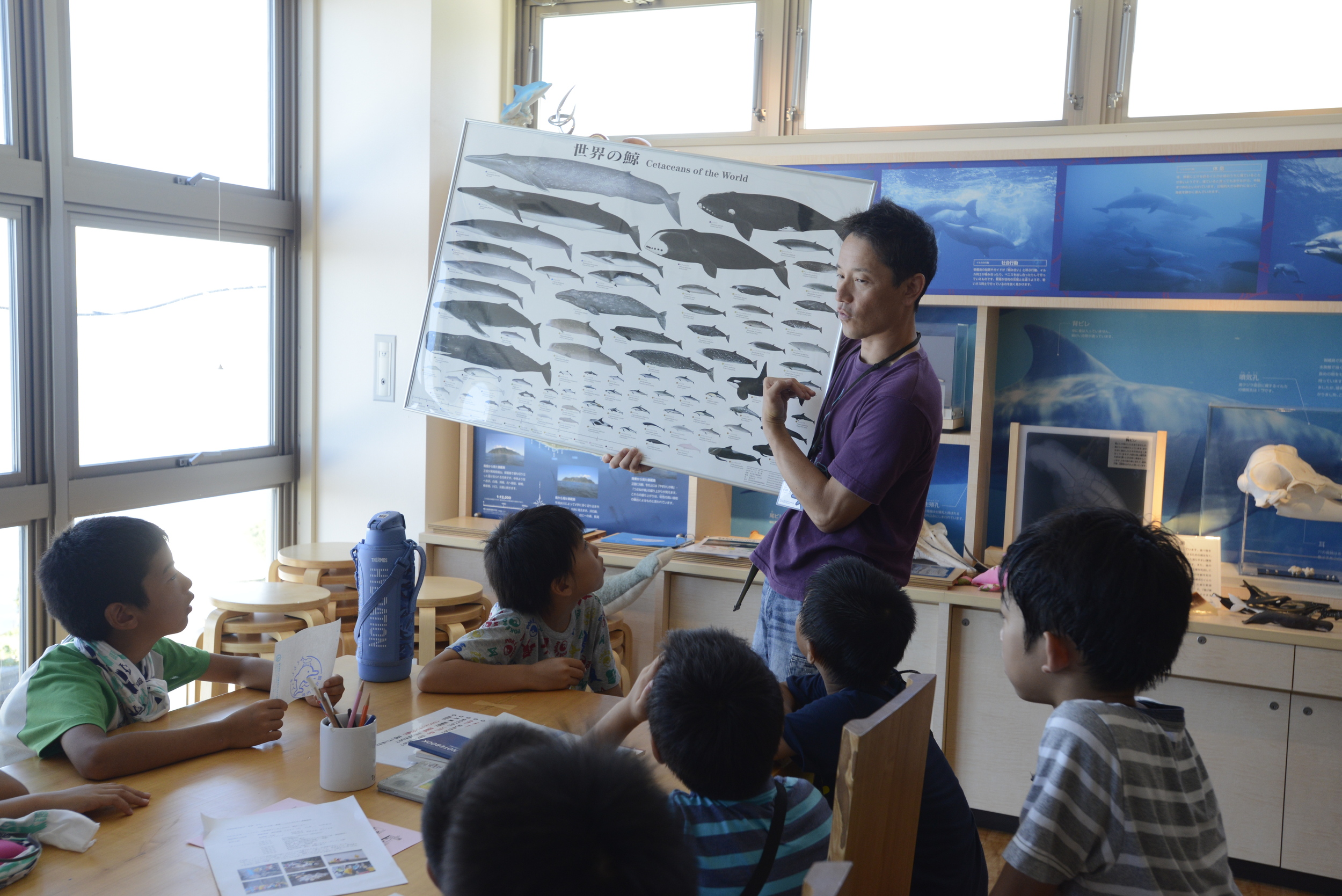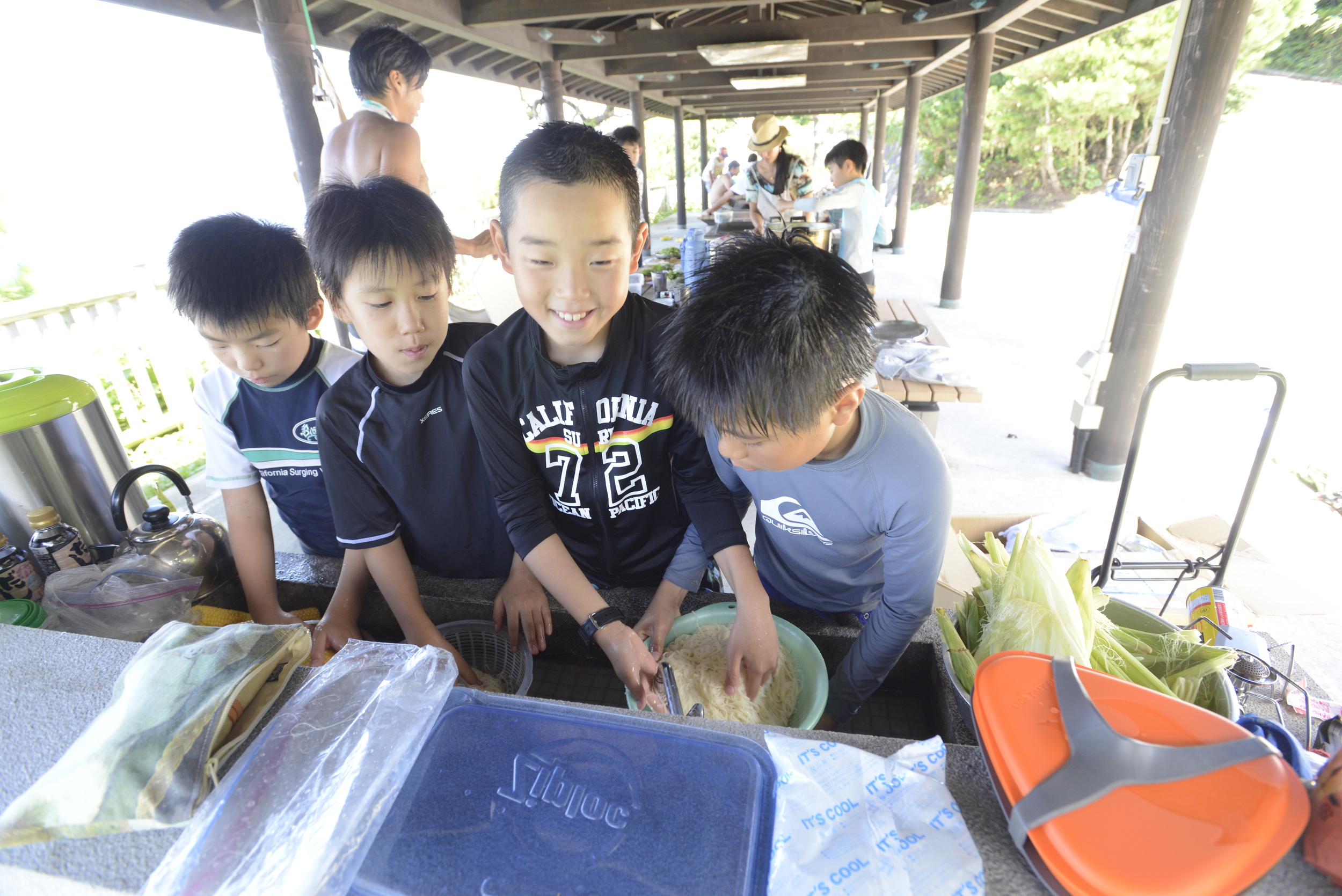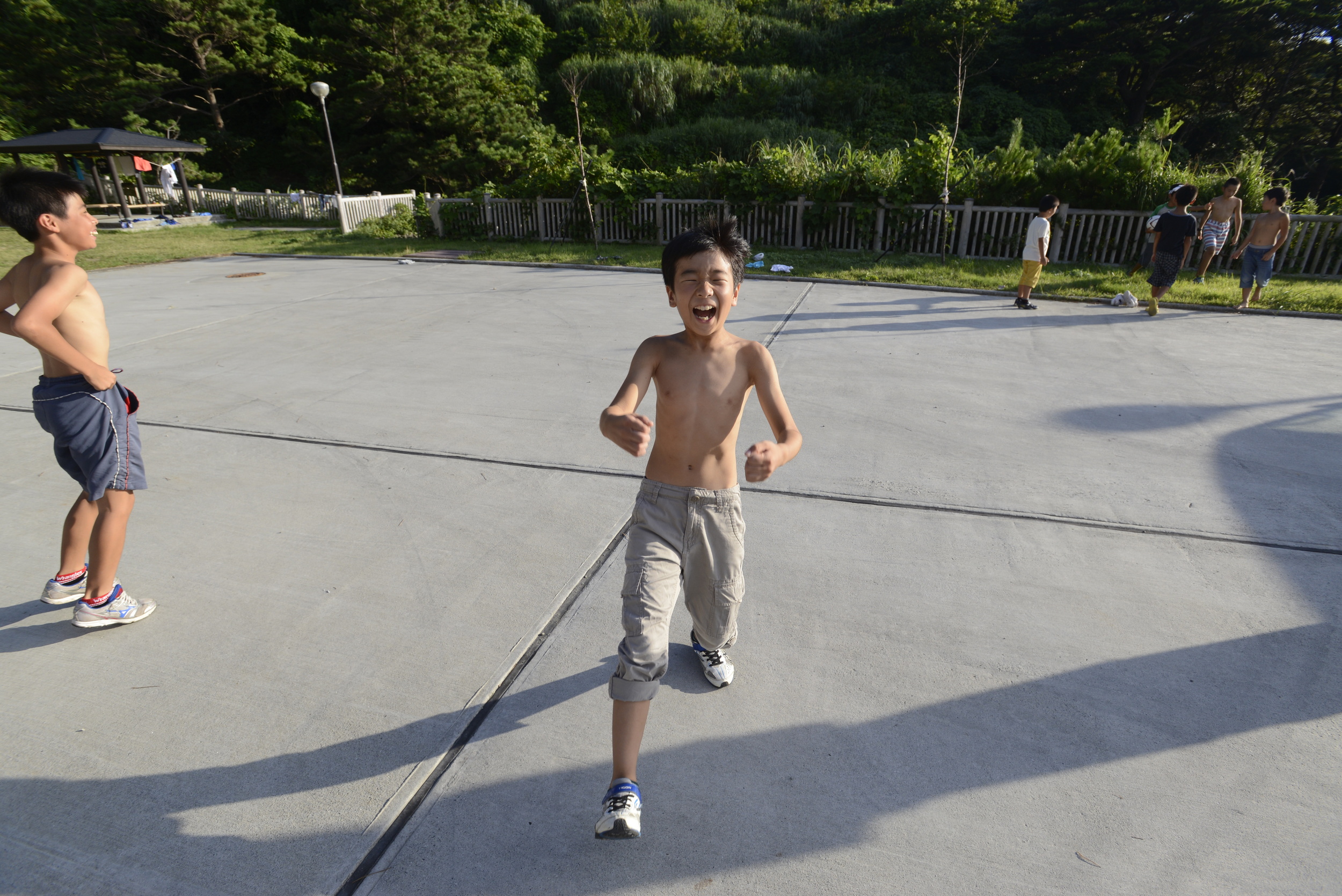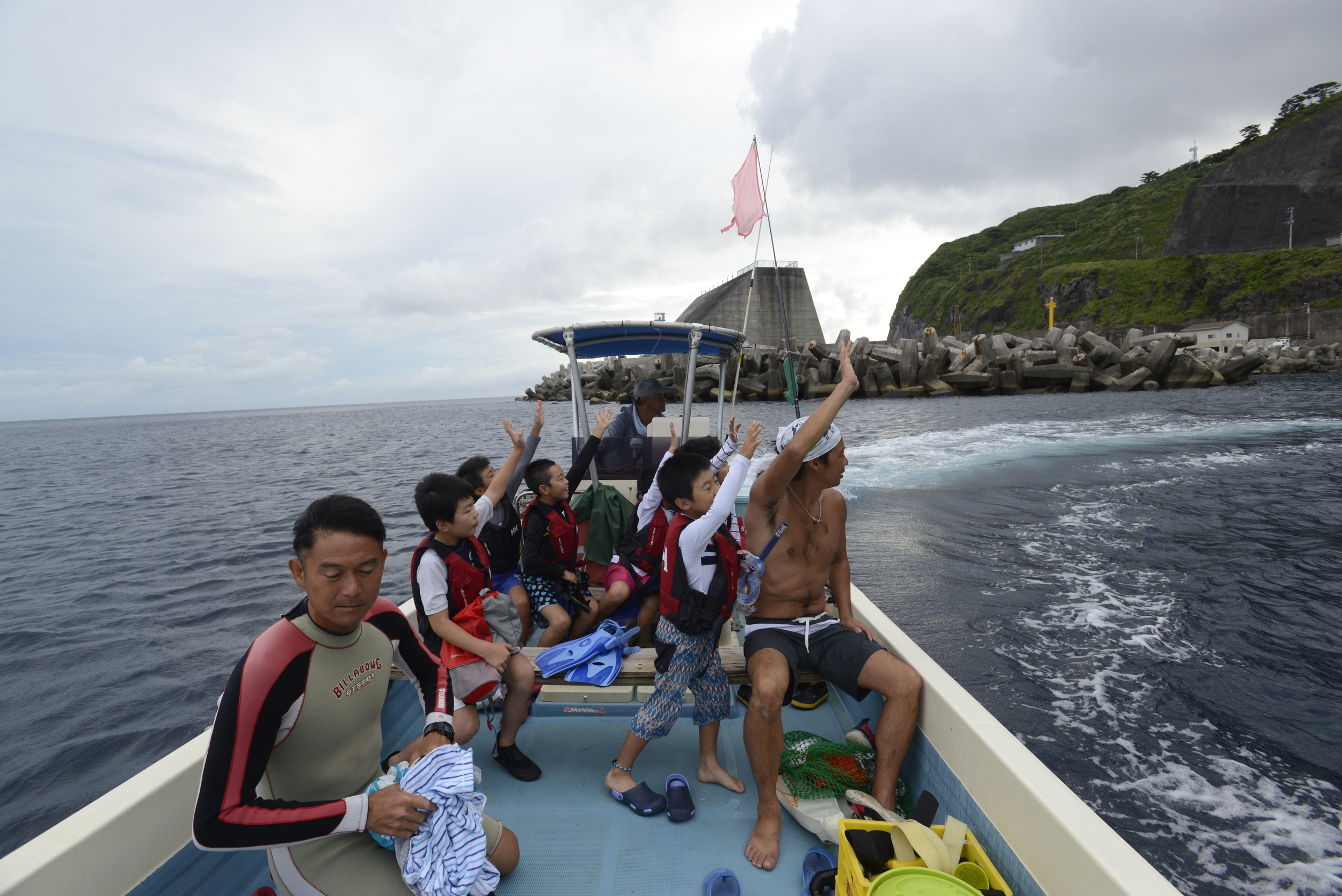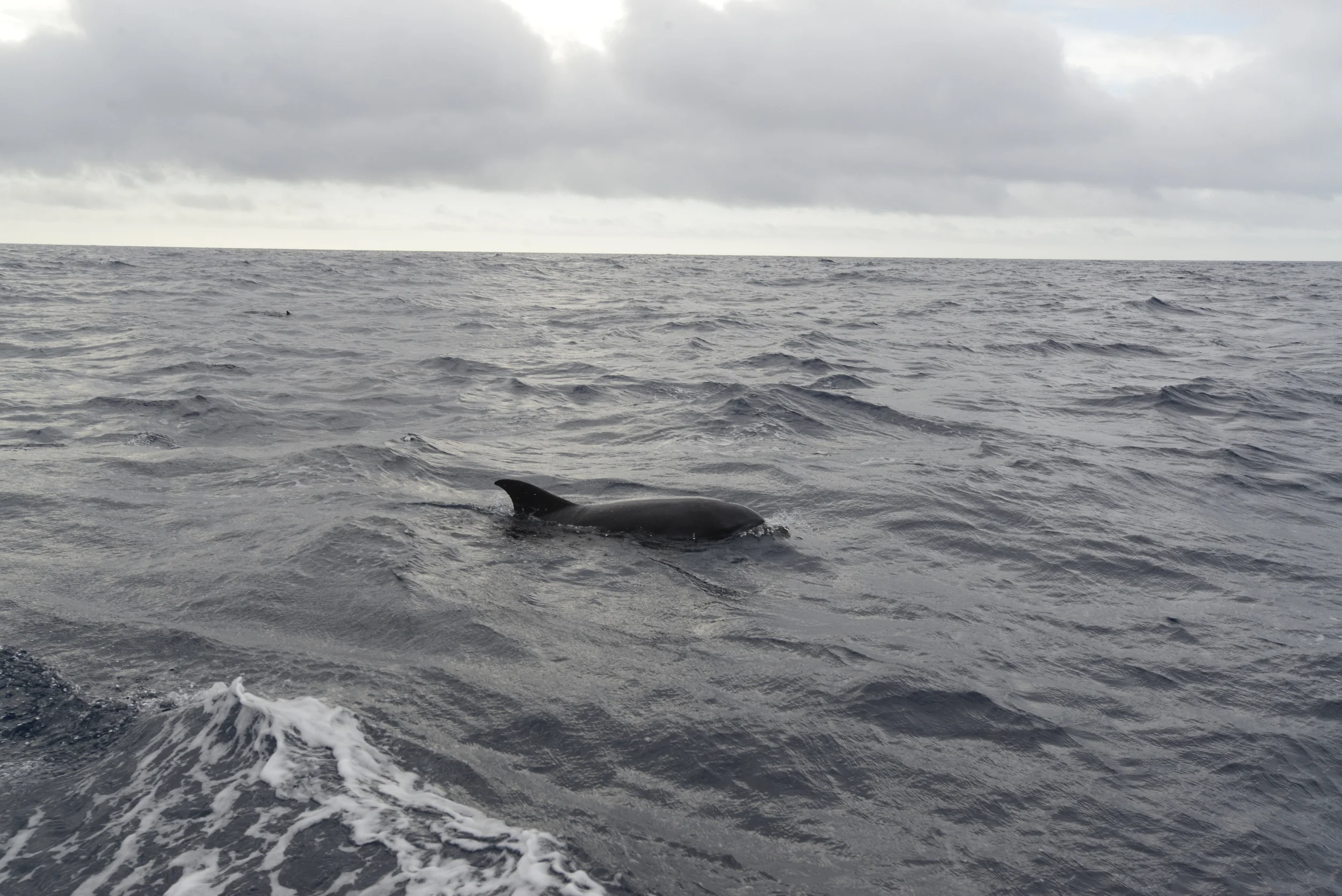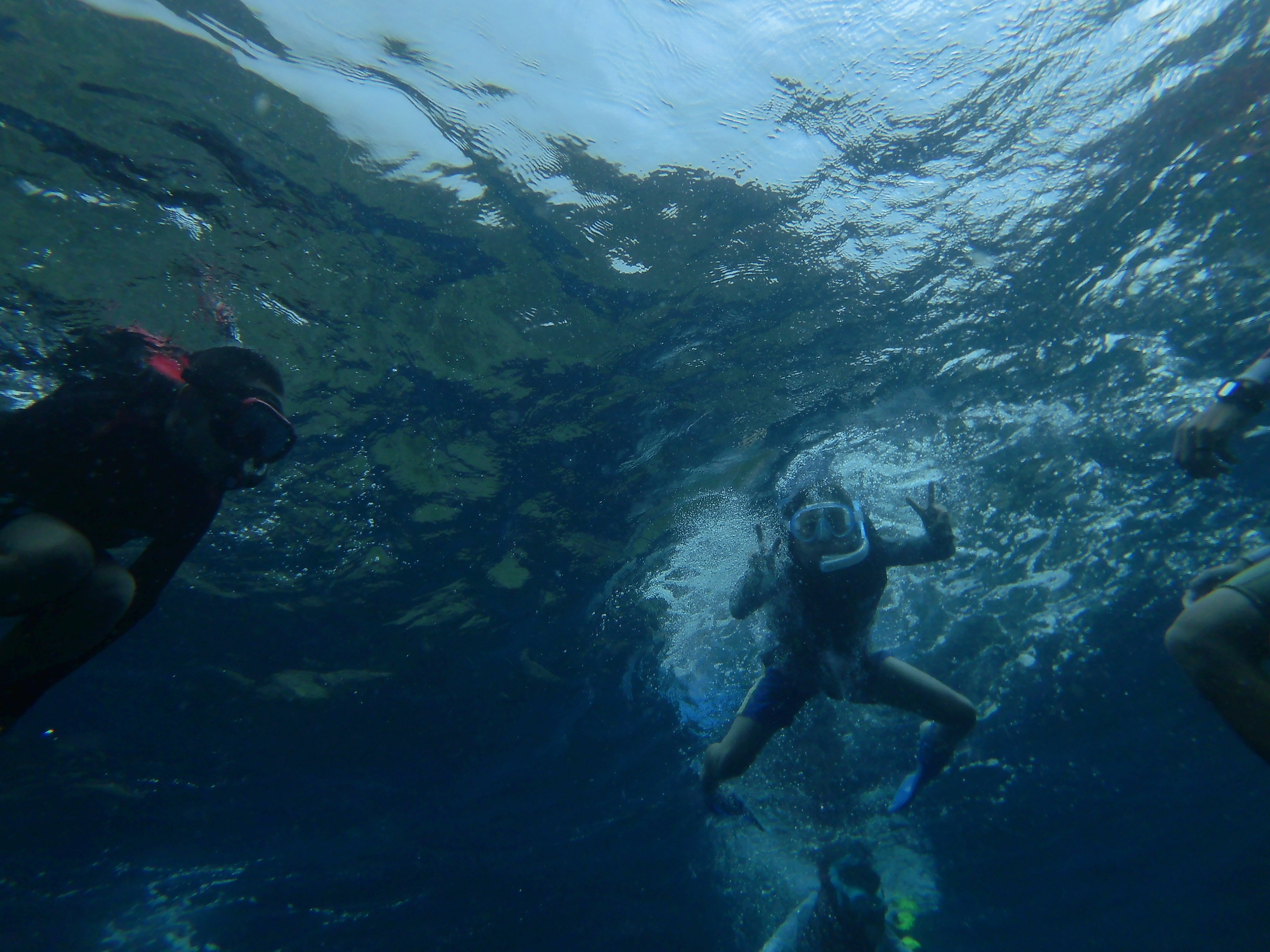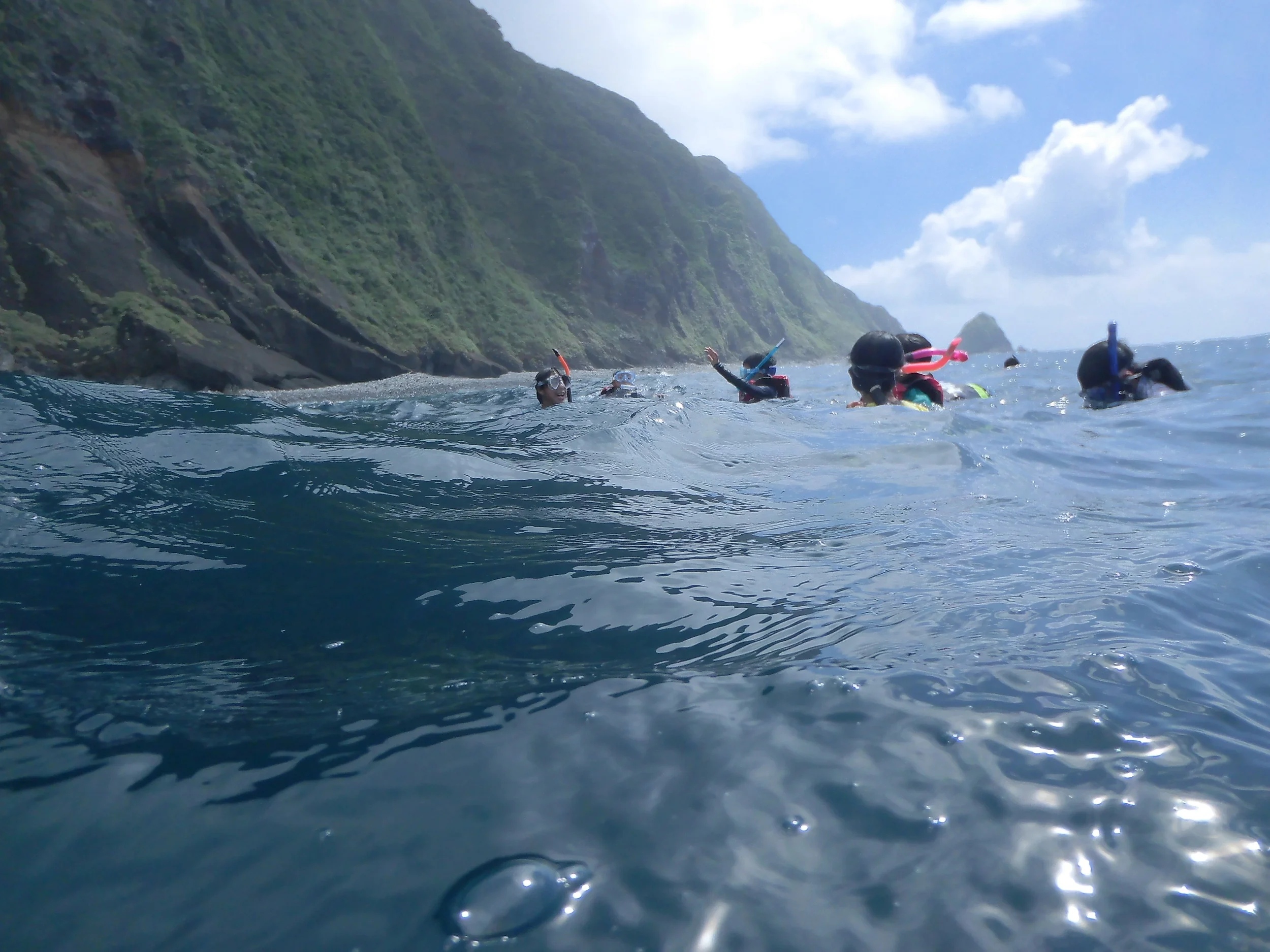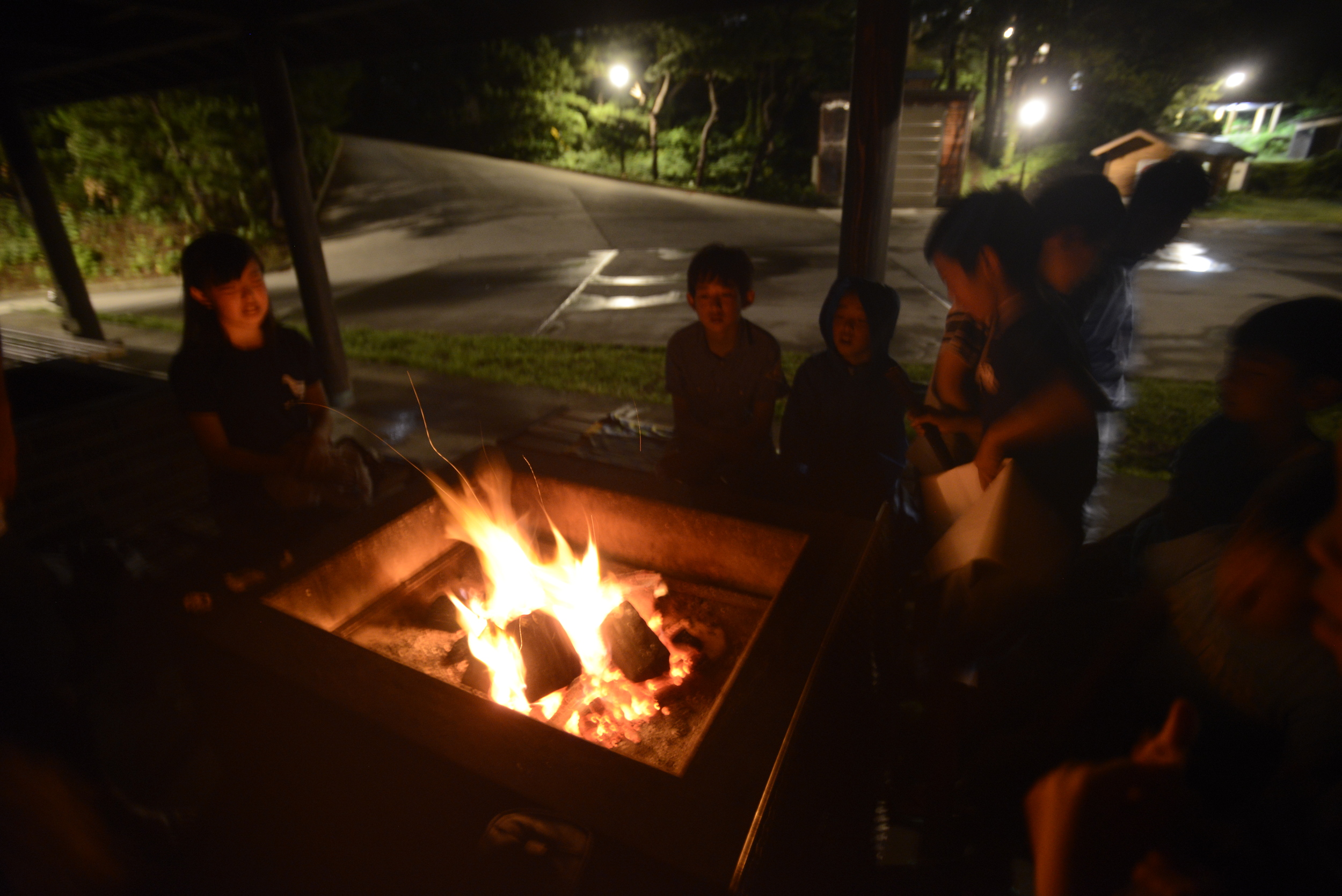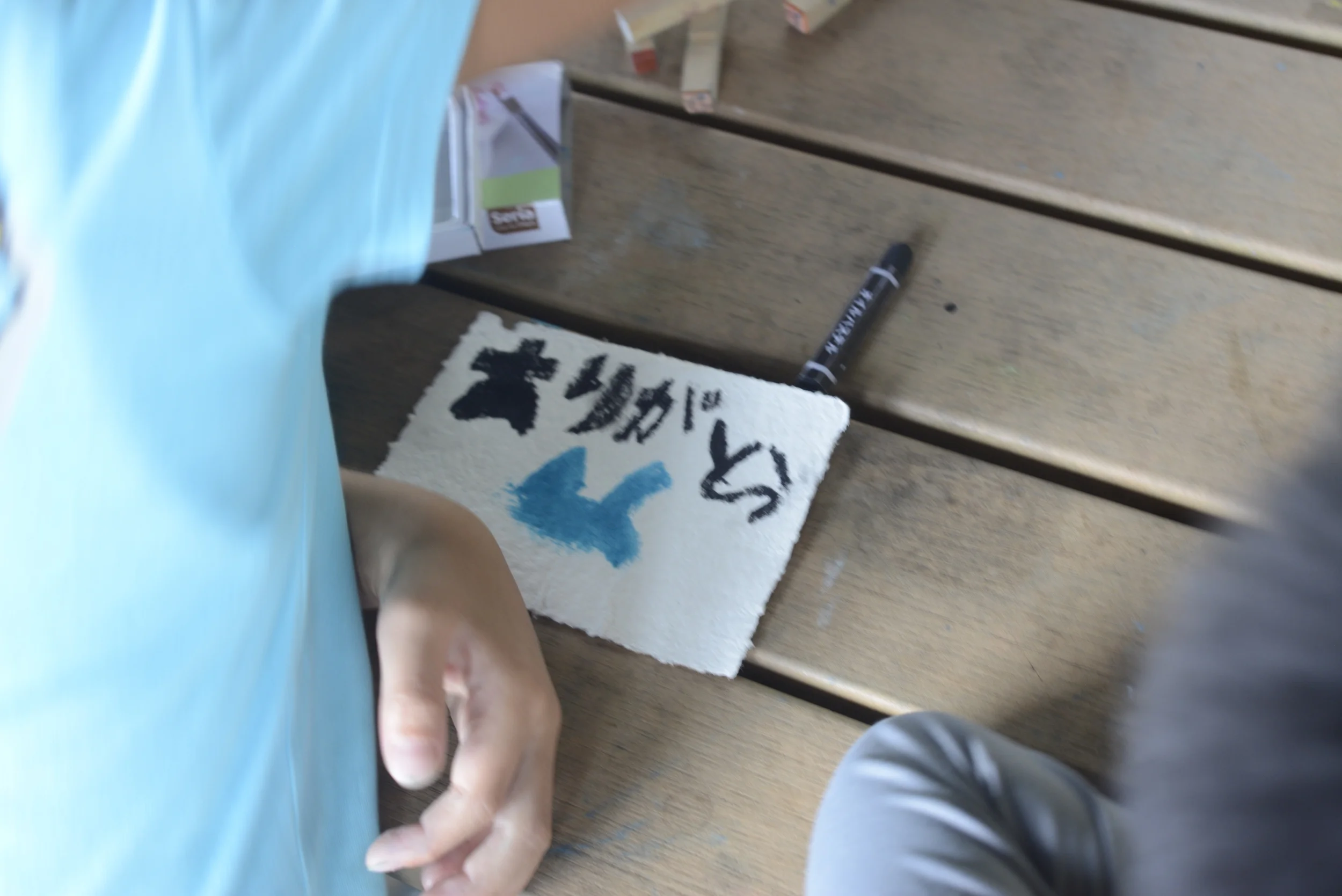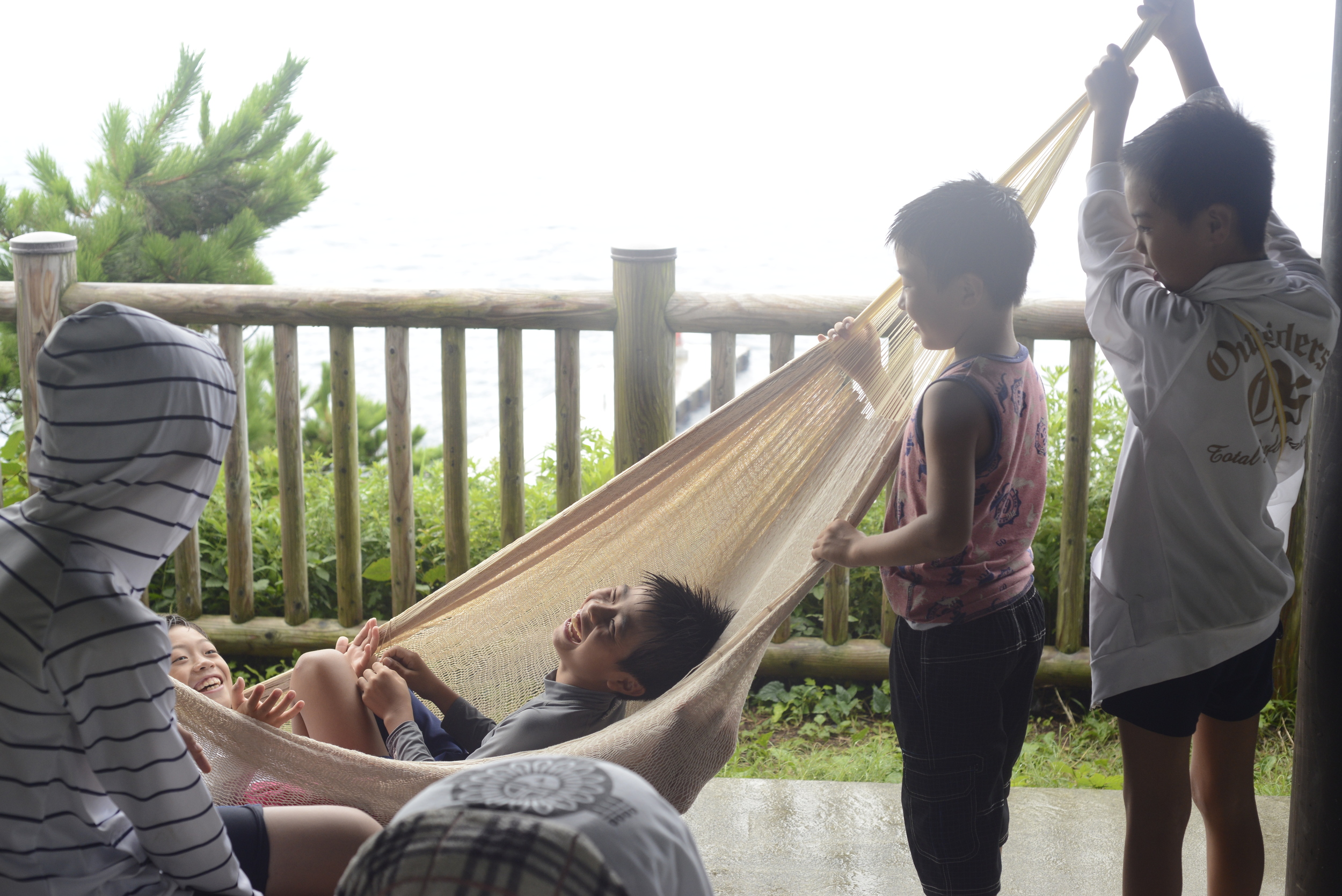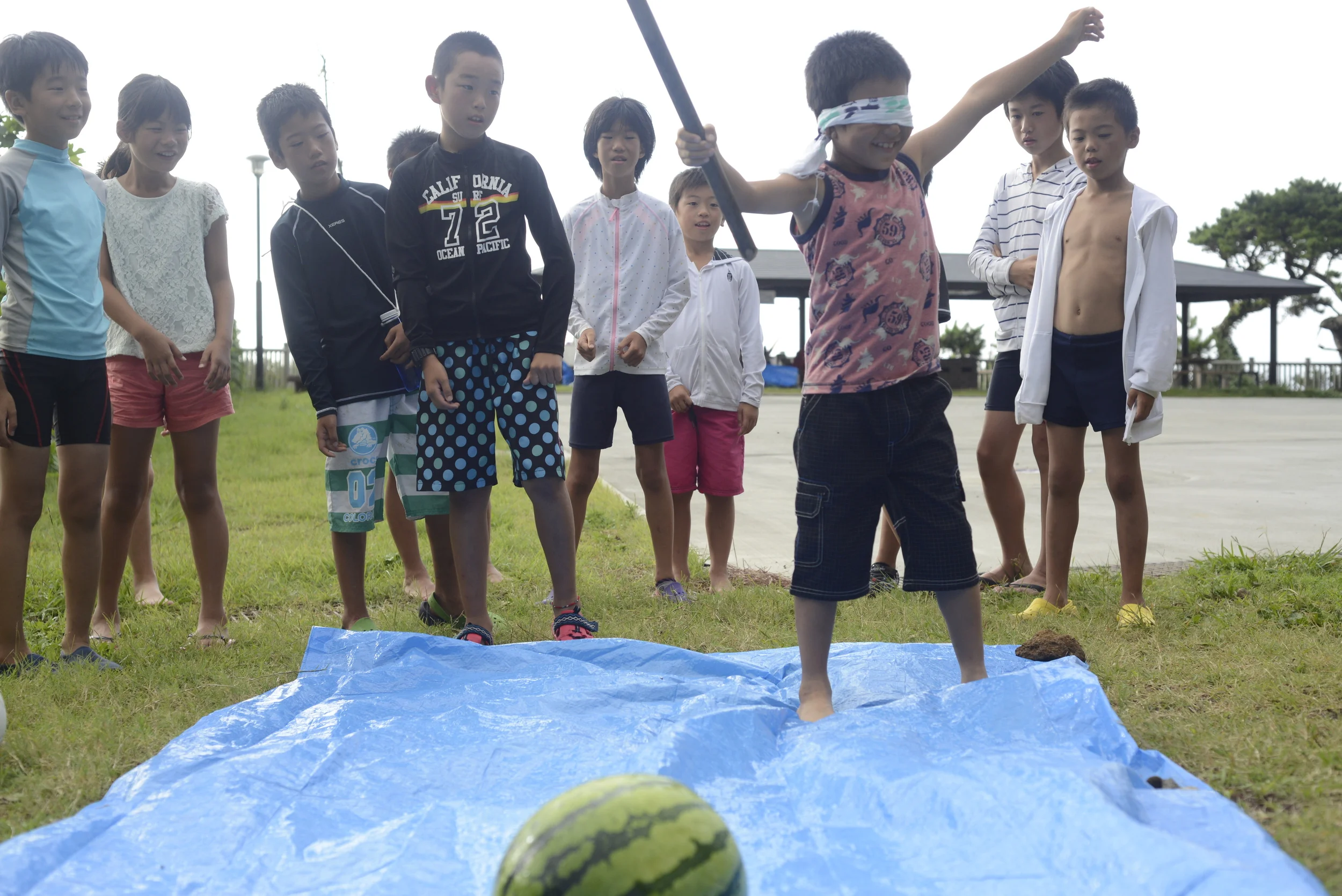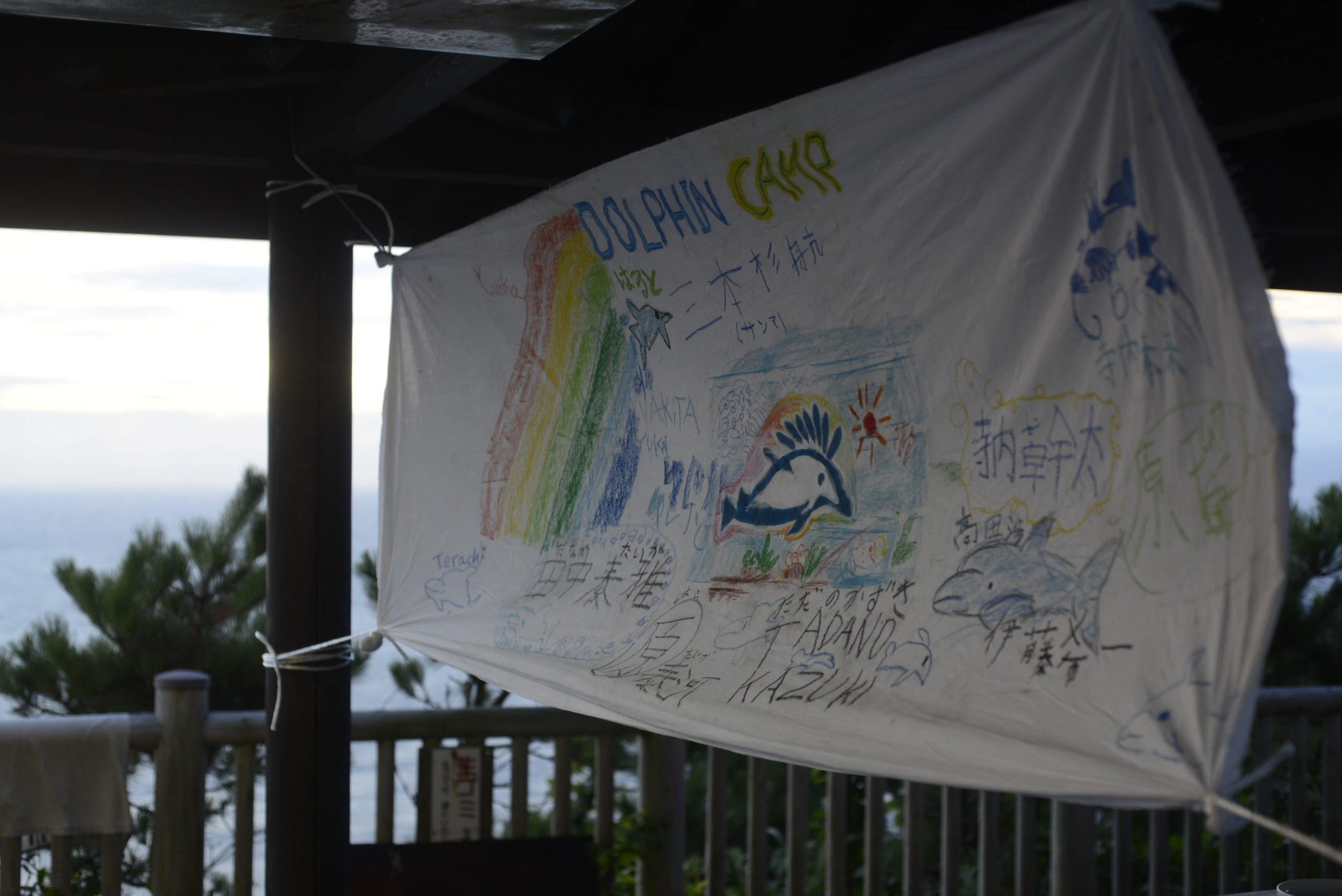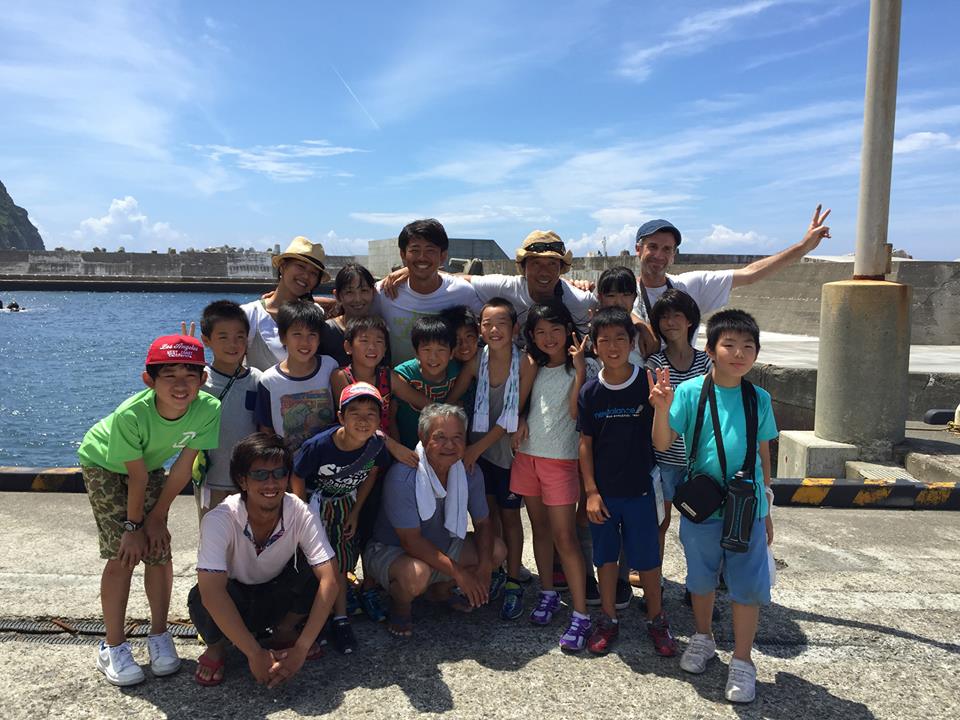Fukushima kids dive into dolphin adventure
Photos and story by Tetsuo Nakahara - Published on Stripes Japan
The children wept as they said goodbye to their new friends. Friendships that are likely to last a lifetime because of the bond forged during a special week of camp. Yes, it was an emotional and heartfelt scene at the Takeshiba Ferry Terminal in Tokyo. One I will never forget, but one I hope repeats with other children in years to come.
This group of children from Fuksuhima, Japan, had just returned from the Fukushima Kids Dolphin Camp that was held Aug. 15-19 on small, friendly Mikura Island. The group spent the week exploring nature, facing fears, sharing feelings and, yes, swimming with wild dolphins.
Longtime friend Toru Fujita and I held the first FKDC in 2014. It is a radiation-free and expense-free camp for children whose families were affected by the meltdowns at the Fukushima Daiichi Nuclear Power Plant following the Great Tohoku Earthquake and Tsunami on March 11, 2011.
Four years after the earthquake and tsunami devastated Fukushima and surrounding areas, there are still some places where radiation levels are checked on a regular basis. In fact, some kids even carry a special device to keep an eye on the radiation level when they go to school. And some areas closer to the power plant are simply off limits. Houses are abandoned, and only the occasional stray animal frequents these neighborhoods.
Concerned about the radiation, even in those areas where people live and work are considered safe, many parents in Fukushima have cut down the time they allow their children to play outside. And even though a couple of beaches in Fukushima are now open to the public, many families avoid them. So children like the ones who attended the recent camp, no longer swim in their hometown.
That’s where FKDC comes in.
But before I go any further, I have to answer the question asked most about the camp: Why do you hold a camp that features swimming with wild dolphins?
I spent two years working as a dolphin swimming guide in Hawaii about 20 years ago. I was amazed by the effect these wild, yet approachable creatures had on humans. I believe swimming with dolphins can not only bring one closer to nature, but also it can bring out courage and confidence.
That’s what the camp is all about: Giving children the courage and confidence to live a positive and fulfilling life. And let’s be honest, swimming with wild dolphins is a pretty cool thing to do.
So, Toru and I and other volunteers set up a 4-night, 5-day excursion to Mikura Island, located about 200 kilometers off Tokyo. It is also the stomping grounds of about 150 friendly bottlenose dolphins. It is one of very rare places in the world that you can swim with wild dolphins under the watchful eye of professionals.
This year we had 13 children attend the camp. The campers, ranging from 2nd-graders to 7th-graders, were selected based off essays they wrote about Fukishima and why they should attend the camp. We had dozens of applicants and it was extremely difficult to select who would attend. We didn’t want to turn anyone down, but the budget and space in the facilities we used were limited.
For those selected, it was quite the adventure. One that didn’t include their parents. They took a bullet train by themselves from Fukushima to Tokyo, rode a ferry with our camp staff and stayed in a bungalow with other children they had never met.
And they swam with wild dolphins.
Upon arrival and getting settled in, the campers were given a snorkeling lesson in shallow water. And then we boarded a boat and headed out to sea in search of dolphins. After 10 minutes, the captain yelled, “Dolphins!” There was a pod of 30 dolphins swimming toward to us.
To say the campers were excited is an understatement. Jumping up and down and eyes almost popping from their sockets as they stared at these friendly and approachable creatures of the sea, they were ready to jump in. So they grabbed their snorkels and masks, donned a life jacket jumped into the unknown.
In the clear blue water, the dolphins slowly approached, checking out the excited children. I could hear the hi-pitched sounds of “yeeew, yeeew” that dolphins make. They swam slowly and got within 10 feet of our group. They stayed with us for less than a minute before swimming away, but it is a time that will forever be etched in the minds of these children.
“I saw a baby dolphin!” one of the campers yelled on the surface.
“Their eyes are bigger than mine, and they swam super close and I thought I was going to touch them,” said super stoked 3rd-grader Kanta Terauchi “They were very gentle and I want to swim with them more.”
During the entire camp, the children had a blast. They played to the max. They ran in their bare feet, snorkeled in the clear water every day, hiked in the mountains and helped cook meals. But most importantly, they bonded with one another.
But the reality of the life they live and the fears they face in Fukushima popped up on occasion.
One day during the camp, a local fisherman gave us a good-sized bonito he caught at sea. We made sashimi out of it.
“Is it safe from radiation?” one boy asked. Only after he was assured that indeed the fresh catch was safe to eat, did he chomp down on the raw chunks of bonito.
As I sat there and took in the scene, I was saddened that these children have such worries and can’t enjoy the sea or the seafood around Fukushima. For the past four years they’ve lived with the constant fear of radiation.
I have heard many stories of the healing power of dolphins. And I believe in them. The children traveled far to see dolphins and it took a lot of courage to swim in deep waters with these creatures of the sea. But the trip was more than just swimming with dolphins. It was about exploration, discovery, conquering fears and learning that it’s OK to dream.
During the last night of camp, each child stood up in front of everyone and announced his dream.
“I want to be the strongest man in the world!” a boy screamed.
“I want to be a nurse,” a girl said with pride.
“I want to be an Olympic swimmer,” chimed in another camper.
“I want to be a volunteer leader,” said another.
After each declaration, the other children yelled back in force, “You can do it!”
The campers were no longer timid and shy like when they arrived. They expressed their feelings thoughtfully but vigorously, shouting into the night sky. They had grown. They had formed their own pod.
Swimming with dolphins around Mikura Island
The chance to swim with dolphins around Mikura Island is available yearly from March 15 to Nov. 15. It can be pretty windy in November, but September is still good month to go because it less crowded and the water is still warm.
There are more than 15 boats and crews that take folks out to swim with dolphins. Each boat can carry 10 people. The cost of the two-hour tours and swim range 6,500 – 8,000 yen ($54 - $66), depending on the tour company. You can book dolphin swim tour before you visit the island.
For more information, go to: http://mikura-isle.com/?page_id=379 (Mikura Island Tourism Office).
The link is Japanese and they don’t speak English. So, you need to have a Japanese friend to help you.
Rules to follow when swimming with dolphins.
- Don’t touch dolphins.
- Don’t chase dolphins.
- Don’t feed dolphins.
- Turn off the flash on your camera.
Fukushima Kids Dolphin Camp
The camp is run by donations received from crowd-funding site Indiegogo and Readyfor. More than $8,000 was raised for this year’s camp. Folks from around the world donated, included those from the U.S., France, Holland and Australia.
Funds for the 2016 camp are being accepted now.
To find out more about the camp, visit at kidsdolphincamp.com.
- See more at: http://japan.stripes.com/news/fukushima-kids-dive-dolphin-adventure#sthash.OsxAzqDr.dpuf
